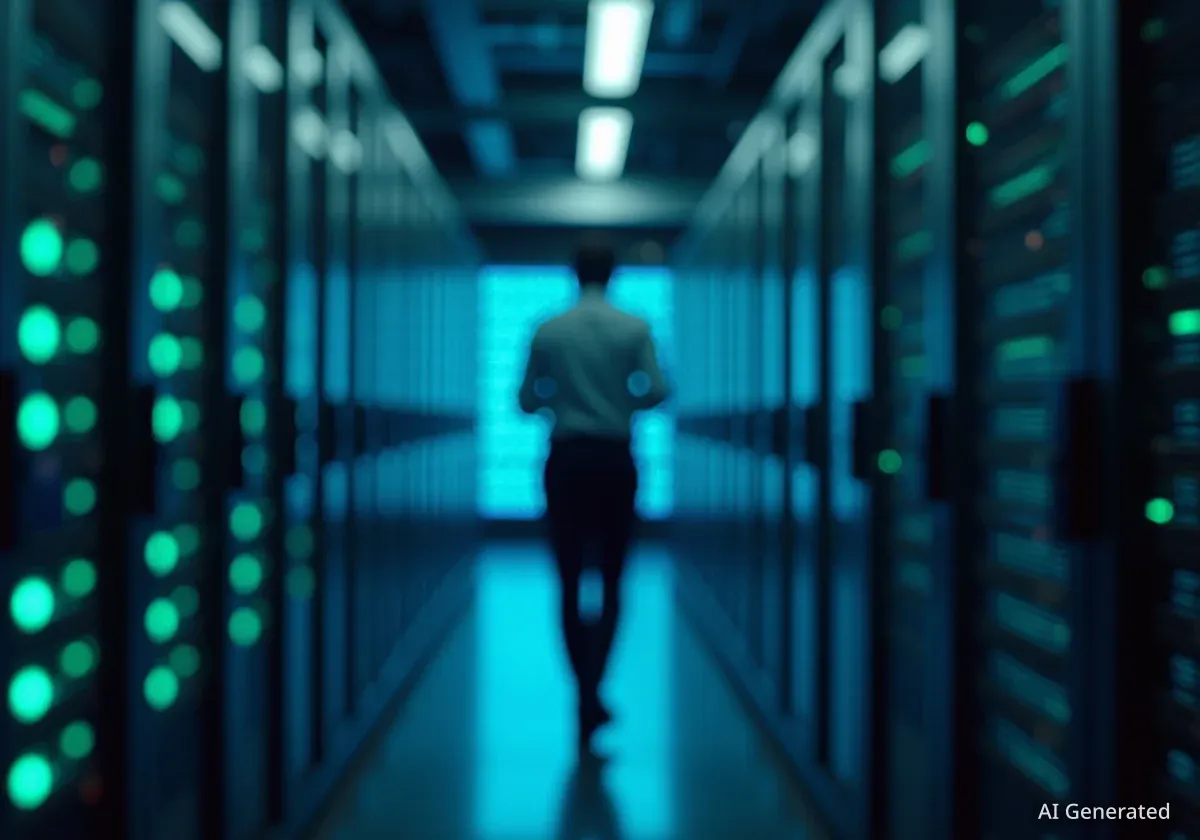Despite significant year-to-date gains driven by artificial intelligence enthusiasm, analysts from Susquehanna and Rosenblatt Securities have issued stark warnings for Super Micro Computer and Intel. The analysts project potential declines of over 65% for both companies, citing concerns over competitive positioning and long-term strategy execution.
These bearish outlooks stand in sharp contrast to the market's current optimism, which has propelled Supermicro shares up 57% and Intel shares up 90% so far this year. The core of the debate centers on whether current valuations are justified by fundamental business strengths or are merely a product of market hype.
Key Takeaways
- An analyst at Susquehanna recommends selling Super Micro Computer, predicting a 69% downside to a $15 price target.
- Rosenblatt Securities advises selling Intel, forecasting a 66% drop to a $14 price target.
- Concerns for Supermicro focus on a perceived lack of a competitive moat and increasing competition from larger players like Dell.
- Intel's challenges include significant market share loss in server CPUs and struggles to gain traction with its foundry business.
- Both companies have benefited from the AI boom, but analysts question their ability to sustain growth and profitability.
Super Micro Computer Faces Competitive Pressure
Super Micro Computer, commonly known as Supermicro, has been a major beneficiary of the AI hardware boom. The company specializes in assembling high-performance servers and storage systems, including those essential for AI data centers that utilize Nvidia chips. Its ability to quickly adapt to new processor releases has given it an early advantage.
However, this business model is now under scrutiny. Mehdi Hosseini, an analyst at Susquehanna, argues that the company lacks a durable competitive advantage, or a "moat." The core of this argument is that Supermicro primarily assembles components manufactured by other innovative firms, a business that could be replicated by competitors.
What is a Competitive Moat?
In business, a competitive moat refers to a company's ability to maintain competitive advantages over its rivals to protect its long-term profits and market share. This can include things like brand identity, patents, or unique technology that is difficult to replicate.
Signs of Weakening Position
Evidence of this competitive threat is already emerging. Tech giant Dell Technologies recently secured contracts with CoreWeave and xAI, two prominent AI companies that have historically been significant clients for Supermicro. This signals that larger, more established players are successfully entering Supermicro's core market.
Financial results also point to potential challenges. In the fourth quarter of fiscal 2025, which concluded in June, Supermicro's revenue grew 7% to $5.8 billion. However, its gross margin decreased by 70 basis points, and its non-GAAP net income fell by 24%. A narrowing profit margin can indicate a loss of pricing power, which often occurs when competition intensifies.
Supermicro's Valuation
The company's stock currently trades at 29 times earnings. While Wall Street projects 22% annual earnings growth over the next two years, the company has missed consensus earnings estimates by an average of 15% over the last five quarters, suggesting that forecasts may be overly optimistic.
Based on these factors, Hosseini has set a price target of $15 per share, implying a potential 69% decline from its recent price of around $48. While such a steep drop is a severe forecast, it highlights significant underlying risks for investors banking on continued AI-driven growth.
Intel's Turnaround Strategy Under a Cloud of Doubt
Intel, a legacy leader in the semiconductor industry, has also seen its stock surge this year, climbing 90% on renewed optimism. The company recently reported encouraging third-quarter results, with revenue rising 3% to $13.7 billion and a return to profitability on a non-GAAP basis. A newly announced partnership with Nvidia has further fueled investor confidence.
Despite these positive developments, Kevin Cassidy at Rosenblatt Securities maintains a deeply skeptical view. He recommends selling the stock with a price target of $14, which would represent a 66% fall from its current price of approximately $41.
Market Share Erosion and Foundry Woes
The primary concern for Intel is its eroding dominance in its core markets. The company remains a leader in central processing units (CPUs), but its market share has been steadily declining. In the critical data center server market, Intel's share of CPU shipments fell to just 63% in the second quarter, a drop of 20 percentage points over the last four years. Competitors like AMD and Arm have been the primary beneficiaries of this shift.
"Execution missteps have cost the company a substantial amount of market share," noted one market observer, pointing to a trend that has continued even as the AI market has expanded.
A central pillar of the company's turnaround plan, initiated in 2021, is the development of its foundry business—manufacturing chips for other companies. This strategy aims to compete directly with industry leader Taiwan Semiconductor. However, Intel's foundry has yet to secure a single major external customer, raising questions about its viability.
The Importance of the 18A Process
The company's future in advanced manufacturing may hinge on its new 18A process node. Intel recently began production on this node, a critical step in proving its technological capabilities. The 18A node is designed to compete with Taiwan Semiconductor's next-generation N2 node. A successful and efficient production ramp-up could inspire confidence and attract the foundry customers Intel desperately needs.
Failure to do so could have severe consequences, potentially forcing the company to abandon development of future nodes and retreat from the cutting-edge of CPU manufacturing.
Intel's Financial Outlook
Wall Street expects Intel's sales to grow at a modest 2% annually over the next two years. Given this slow growth forecast, its current price-to-sales ratio of 3.1 appears elevated to some analysts, supporting the argument that the stock may be overvalued relative to its immediate prospects.
While the partnership with Nvidia, which includes a $5 billion investment, is a positive development, the broader strategic challenges remain. Cassidy's bearish forecast suggests that until Intel can demonstrate a reversal in market share loss and tangible success in its foundry business, the stock carries substantial risk.





